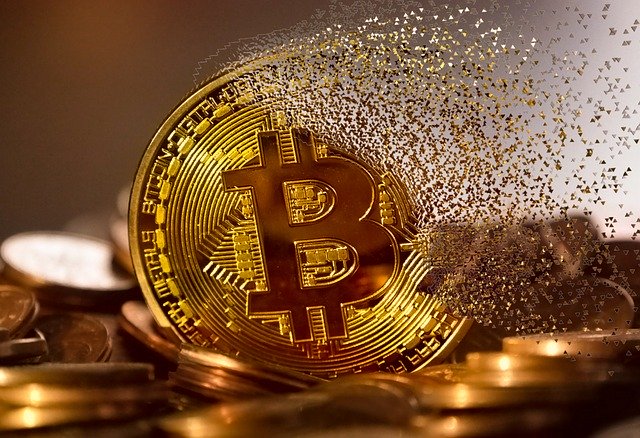What is a Bitcoin block halving?

The next Bitcoin block halving is expected in :
One of the most important properties of Bitcoin is that the number of Bitcoins that will ever be in circulation is limited. The creation of new Bitcoins is predictable and transparent to all. This is different from the traditional banking sector, where central banks can print additional money almost without restriction.
Important questions about Bitcoin block halving:
Where do new Bitcoins come from?
What is a block halving?
What does Bitcoin block bisection mean for Miner?
What happens to the Bitcoin price after block halving?
What happens after the very last block halving?
Where are new Bitcoins from?
To understand what a Bitcoin block halving means, it is helpful to understand how new Bitcoins are created.
There will be a limited amount of Bitcoin. In total, there will be 21 million. Actually, there will be 20,999,999.9769 Bitcoin, but 21 million is a bit easier to pronounce. The upper limit of the circulating supply is set and enforced by the Bitcoin protocol. Coins are issued at a predictable rate using block rewards.
A block reward is a quantity of Bitcoin that Miners receive as a reward for their work. Miners maintain and secure the Bitcoin network by adding new blocks filled with transactions to the existing chain of blocks, the block chain. It is crucial and important work, which is why it is rewarded.
At the moment the reward per block is 12.5 Bitcoin. These are newly created Bitcoins that are added to the current offer. The block reward is halved approximately every four years, which is called block halving.
What is a block bisection?
Bitcoin block halving is the moment when the mining reward per block is divided by two. This halving occurs every 210,000 blocks. Mining a block takes an average of ten minutes, so it can be assumed that a Bitcoin block halving occurs approximately every four years. This will continue until 21 million Bitcoins are in circulation. At the top of this page, you can see how long it will take until the next halving.
What does the Bitcoin block halving mean for Miner?
Creating Bitcoin is expensive, but miners can make profits if their income, the block reward, exceeds the cost. These costs include utility bills, equipment and insurance for the equipment.
Bitcoin block halving can be predicted, so Miners know exactly when the reward in Bitcoin halves. In this respect, the block bisection offers miners a degree of certainty. But there is also uncertainty. The computing power in the network has been unstable for years, as has the delivery time of mining equipment.
It may sound as if the Miners receive less income after the halving, but halving the reward in Bitcoin does not necessarily mean halving the reward in Euro or Dollar. Will demand remain constant and supply growth slow down? Then the price may rise in the future. However, the impact of transaction costs may also increase. In this way the miners still receive sufficient compensation for their work.
What happens to the Bitcoin price after a block halving?
After a block is halved, the amount of Bitcoin that a miner receives when he finds a block is halved. When the very first block was mined, the reward was an incredible 50 Bitcoins, even though the market value at that time was almost zero. After the first halving, the reward was reduced to 25 Bitcoins, and the current reward per block is 12.5 Bitcoins. The corresponding value in a fiat currency such as the dollar or the euro is different at any given time, depending on the Bitcoin price.
Some distributors believe that halving the Bitcoin block will directly affect the price. The first halving took place in 2012. One year later, Bitcoin reached a temporary all-time high. The same happened one year after the next halving in 2016.
Is block halving responsible for such price activity or is it just speculation? Currently 1,800 Bitcoins are mined daily and the vast majority of these coins are sold immediately to cover the cost of mining. Halving by half therefore reduces the number of coins that are put on the market, which leads to further shortages. This is the best logical explanation for the price increases after the block is halved.
But will this also be the case with the next halving in 2020? We really cannot say. The Bitcoin price is volatile and since the halving dates are known, the increasing scarcity could be taken into account before the halving.
What happens after the very last block halving?
Miners will no longer receive a block reward after the Bitcoin block has been cut in half. At this point they will only earn Bitcoins through transaction costs. This means that transaction costs will play a greater role in the future.
Does this mean that transactions are becoming more expensive? This does not necessarily have to be the case. There are many developments in the network that make the expenses manageable.
For example in the implementation of the Lighting Network. This new technology allows transactions on a second level instead of the actual block chain.
Perhaps in the future smaller transactions will take place on this second level. The transaction costs for sending coins in the Lightning Network are not high, which ensures affordable transactions in the future.
But that is all in the future; we will not even experience the last block halving ourselves. It is estimated that the last bit of Bitcoin will be mined in 2140.
I don’t think we should expect an immediate price increase, maybe like the halving in 2016 a significant price increase with its own new all-time high will only be reached later.
[Sassy_Social_Share style=”background-color:#000;” type=”floating”]

